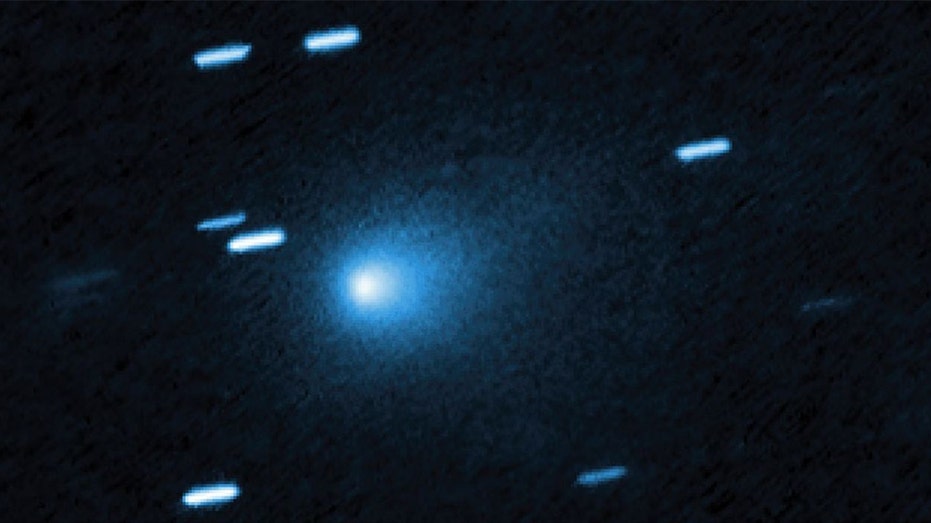Harvard physicist says mysterious interstellar object could be nuclear-powered spaceship
A Harvard physicist who sounded the alarm earlier this month about a rare interstellar object passing through our solar system and suggested it might be more than a comet now says it could even be a nuclear-powered spaceship.The object, dubbed 3I/ATLAS, was first detected in early July by an Asteroid Terrestrial-impact Last Alert System (ATLAS) telescope in Chile. It marks only the third time an interstellar object has been observed entering our solar system, according to NASA.While NASA classified the object as a comet, Dr. Avi Loeb pointed out that an image showed an unexpected glow in front of the object rather than trailing behind it something he called "quite surprising."In a blog post this week, Loeb wrote that the objects brightness profile cannot be explained by sunlight reflection or standard cometary outgassing.METEORITE FRAGMENT THAT SLAMMED THROUGH HOMEOWNER'S ROOF IS BILLIONS OF YEARS OLD, PREDATES EARTH: PROFESSORInstead, he suggested, 3I/ATLAS might be generating its own light possibly from nuclear energy."Alternatively, 3I/ATLAS could be a spacecraft powered by nuclear energy, and the dust emitted from its frontal surface might be from dirt that accumulated on its surface during its interstellar travel," Loeb wrote. "This cannot be ruled out, but requires better evidence to be viable."Loeb dismissed other natural power sources. A primordial black hole, he said, would generate only about 20 nanowatts far too weak. A radioactive fragment from a supernova was highly unlikely given its rarity, and frictional heating from interstellar gas and dust was ruled out by momentum and density constraints.RARE JUPITER-SIZED PLANET DISCOVERED 3,200 LIGHT-YEARS AWAY USING EINSTEIN'S SPACE-TIME WARPING METHODThat leaves the simplest explanation: a central, compact, high-power source. The most natural way to achieve the gigawatt-level luminosity observed, Loeb noted, would be nuclear power.Still, Loeb does not claim the object is nuclear-powered. He stresses there is only one possible interpretation if natural models fail and proving it would require more evidence.3I/ATLAS is estimated at about 20 kilometers across, larger than Manhattan.Loeb has also raised questions about its unusual trajectory."If you imagine objects entering the solar system from random directions, just one in 500 of them would be aligned so well with the orbits of the planets," Loeb told Fox News Digital earlier this month.SCIENTISTS DISCOVER ANCIENT RADIO SIGNALS FROM DISTANT GALAXY CLUSTERThe interstellar object, which comes from the center of the Milky Way, is also expected to pass near Mars, Venus, and Jupiter another improbable coincidence, he said."It also comes close to each of them, with a probability of one in 20,000," he said.According to NASA, 3I/ATLAS will reach its closest point to the sun about 130 million miles away on October 30.CLICK HERE TO GET THE FOX NEWS APP"If it turns out to be technological, it would obviously have a big impact on the future of humanity," Loeb said. "We have to decide how to respond to that."Fox News Digitals Sophia Compton contributed to this report.




